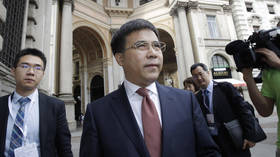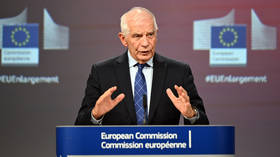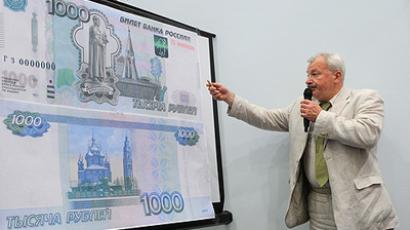Coming to grips with Russian inflation

With the Central Bank of Russia holding interest rates in March Business RT spoke with Alexey Vedev, Director of Center of Structural Research, about the interplay between inflation, interest rates, and the banking system .
RT: What are your expectations for inflation in 2011? AV:“One can’t forecast the rates of inflation and GDP separately. If GDP grows 4%, then we’ll have 9% inflation this year, and we if target 7% inflation, then Russia’s GDP will grow 1.4%. So, here we can see this economic dilemma, when we need to choose between a low inflation rate and high GDP growth rate. Anyway, hypothetically, we can have GDP growing 5% year on year, with inflation being at 7%, but we would need investment to grow 18%.”RT: What other tools apart from raising reserve requirements and interest rates are likely to be used against inflation?AV:“I think, our Central Bank doesn’t have even these tools, as they are inefficient. The main reason for inflation in Russia is an institutional one – inflation, which is a price growth caused by increasing tariffs. I think, the influence of monetary factors is minor. So, everything the Central Bank of Russia can currently do, with the elections coming, is to either keep Rouble stable or slightly strengthen it as an anti- inflationary tool, which is far more efficient than any manipulations with reserve requirements.”
RT: Is the CBR likely to allow the rouble to strengthen in order to take the sting out of inflation or is it more interested in moving to a free float?AV:“I have no doubt that the CBR will be strengthening the rouble this year and until May 2012. A stronger rouble will make people more wealthy in real terms and drive inflation down. Of course it’ll damage some of the industries, but given the electoral cycle, it’ll be reasonable.”RT: What is the impact of a higher inflationary environment for the banking system itself? How does it affect margins?AV:“Inflation in Russia has almost no impact on the banking system, because real interest rates are more indicators for macroeconomists, not bankers who are mostly concerned with margins.Margins aren’t anyhow affected, as people today simply have changed their saving sentiment. They rather minimize their losses rather than save, as real deposit rates are mostly negative. So, a bank takes deposits at 5% and give loans at 10%, it doesn’t depend on inflation.”
James Blake, Anastasia Kostomarova, RT














